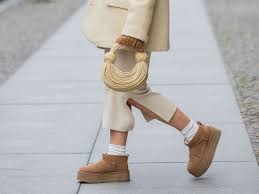For over five decades, Nike has transcended its role as a mere footwear brand to become a global symbol of innovation, athleticism, and cultural influence. From the tracks of elite athletes to the bustling streets of urban fashion, Nike shoes have left an indelible mark on both sports and lifestyle. This article explores the journey of Nike footwear, highlighting its technological breakthroughs, design evolution, and commitment to sustainability.
A Legacy Born on the Track
Nike’s story began in 1964 as Blue Ribbon Sports, co-founded by Bill Bowerman and Phil Knight. Renamed Nike in 1971, the brand quickly gained traction with Bowerman’s revolutionary waffle sole, crafted using a waffle iron for enhanced traction. The 1980s ushered in the Air revolution, with the Nike Air Tailwind debuting the first air-cushioned sole. This era also saw the birth of the Air Jordan line in 1985, a collaboration with Michael Jordan that redefined sneaker culture and turned functional footwear into a fashion statement.
Engineering Excellence: Breakthrough Technologies
Nike’s dominance stems from its relentless pursuit of innovation:
- Air Cushioning: From the Air Max’s visible window (1987) to today’s adaptive Air VaporMax, this technology remains a hallmark of comfort.
- Flyknit: Launched in 2012, this lightweight, form-fitting material reduced waste and revolutionized performance shoes like the Flyknit Racer.
- React Foam & Vaporfly: React foam offers energy return for runners, while the Vaporfly’s carbon-fiber plate, worn by marathon record-breakers, redefined racing efficiency.
- Adaptive Fit: The self-lacing Nike Adapt series (e.g., Adapt BB) merges tech with futuristic design.
From Courts to Culture: Design as a Lifestyle
Nike’s designs resonate beyond sports. The Air Force 1 (1982) and Dunk (1985) became streetwear staples, while collaborations with icons like Virgil Abloh (Off-White) and Travis Scott inject high fashion into sneaker culture. Customization via Nike By You empowers wearers to personalize classics like the Air Max or Blazer, blending individuality with timeless silhouettes.
Sustainability: Striding Toward a Greener Future
Nike’s Move to Zero initiative underscores its eco-conscious shift. Initiatives include:
- Recycled Materials: Over 60% of new products incorporate recycled polyester, with shoes like the Space Hippie line made from factory scraps.
- Nike Grind: Repurposed rubber, foam, and textiles from old shoes into new products or sports surfaces.
- Carbon Neutrality Goals: Aiming for zero carbon waste by 2025, Nike continues to innovate with lower-impact materials and processes.
Conclusion
Nike’s journey נעלי נייק reflects a blend of heritage and forward-thinking vision. By marrying cutting-edge technology with cultural relevance and environmental stewardship, the brand continues to shape the future of footwear. Whether you’re chasing personal bests or streetwear trends, Nike offers a shoe for every step of your journey. As the brand strides into tomorrow, one thing remains clear: Nike isn’t just making shoes—it’s crafting the future of movement.









